latest
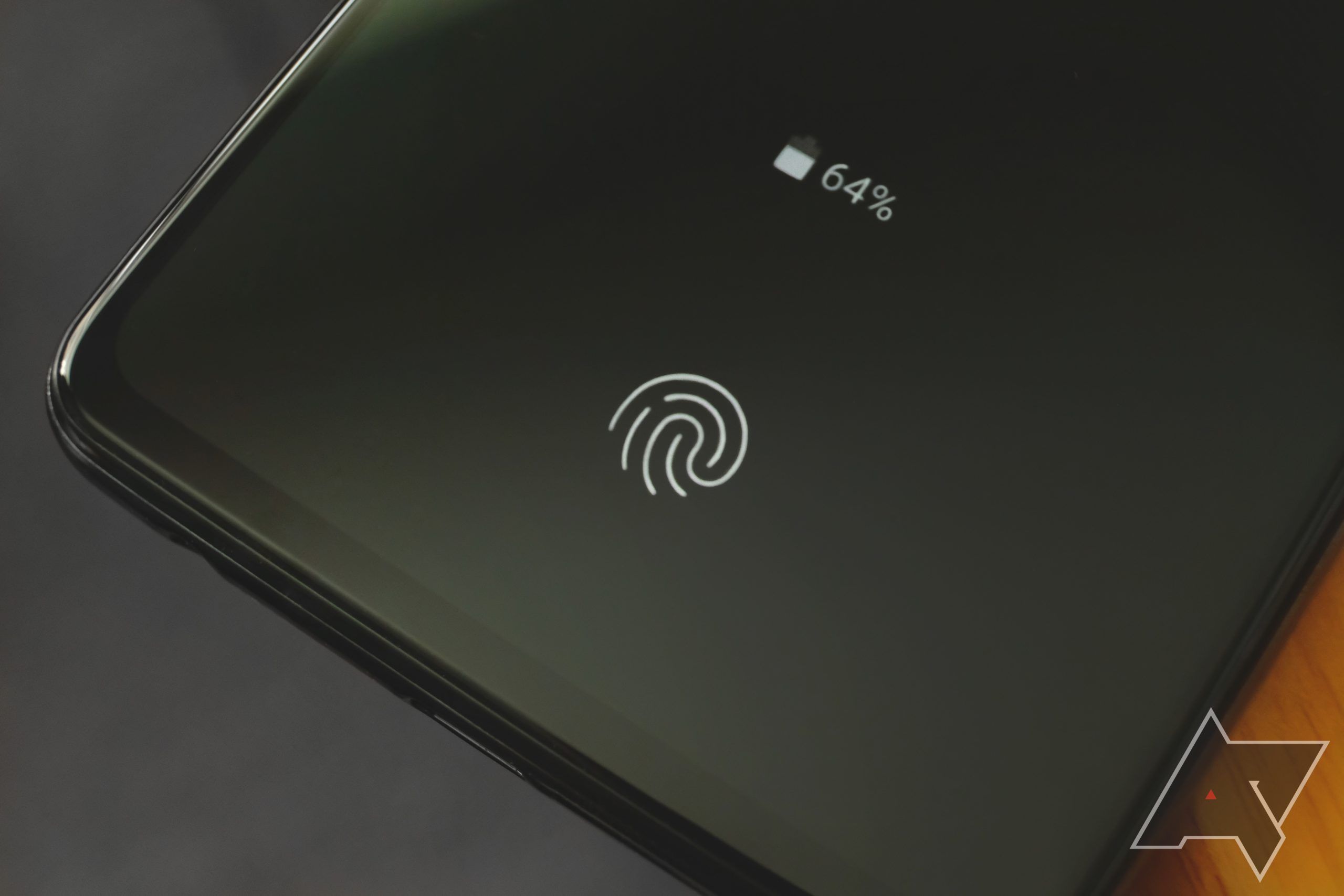
How to improve fingerprint accuracy on your phone
Tired of your fingerprint sensor letting you down? Follow these tips for always accurate scanning
Mobile phones have fingerprint sensors on their backs, fronts, side buttons, or under the displays on premium Android models. Although the technology behind fingerprints has advanced, there are moments when phones fail to recognize a registered fingerprint. Depending on the sensor technology, making it more accurate is often a quick fix. Here's how to make your fingerprint sensors more accurate.
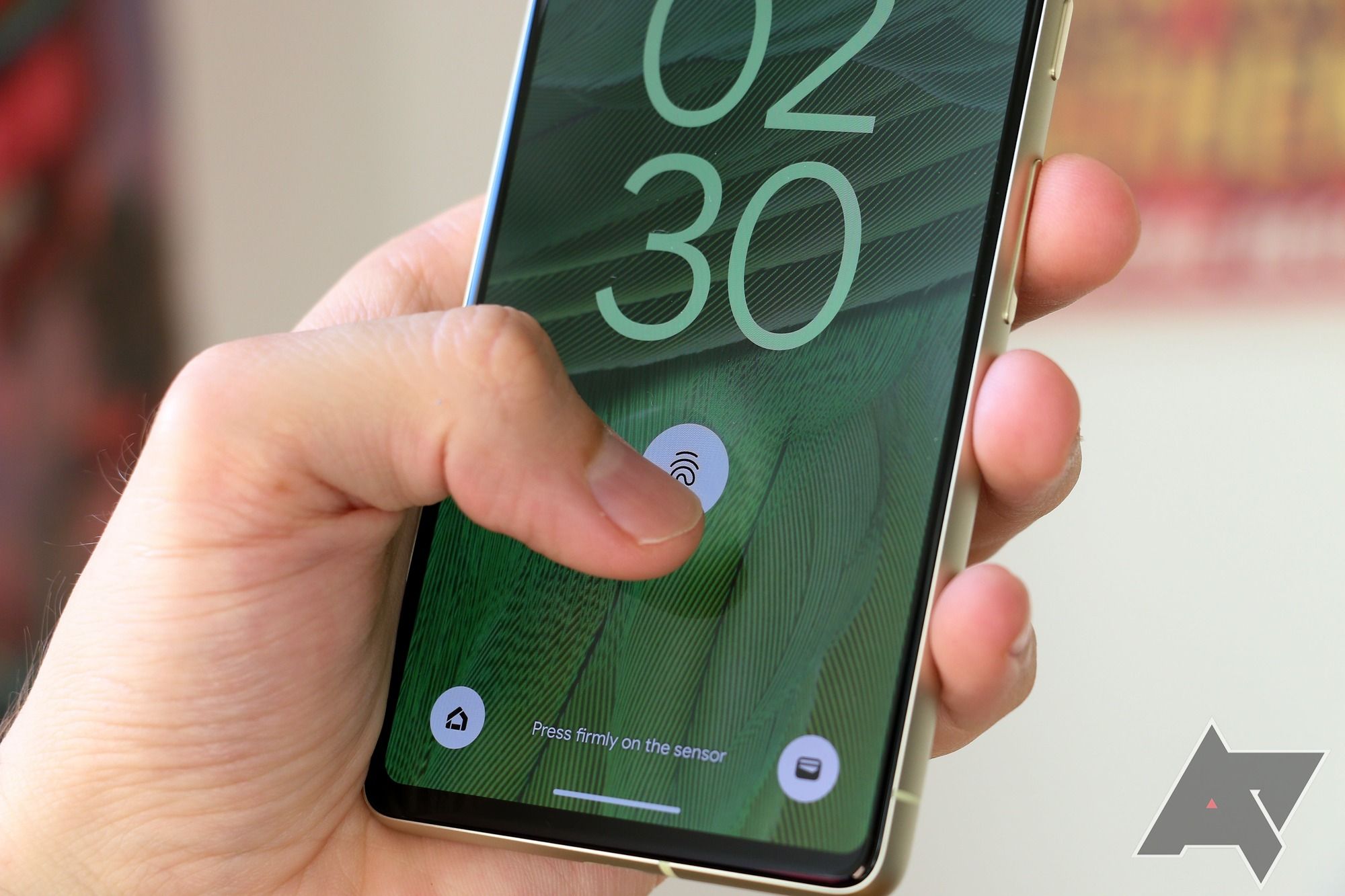
Weekend poll: Do you prefer fingerprint scanners or face unlock?
What's your most trusted method for unlocking your phone?
These days, your smartphone probably contains an almost absurd amount of personal data. Bank accounts, credit cards, maybe even your driver's license — it's practically an internet-connected wallet. That makes keeping your phone as secure as possible an essential step, in case it's ever misplaced or, worse, outright stolen. But with so many methods for unlocking your phone, it should come as no surprise that every enthusiast has strong feelings about mobile security.

This $15 hacking device could be your fingerprint scanner's worst nightmare
You probably shouldn't rush to disable fingerprint unlocking, though
Your fingerprint is probably one of the safest methods to unlock your phone without inputting a password. It's quick, as you only need to touch the device, and no one can really access it unless their fingerprint is also enrolled. They've been commonplace in our smartphones for several years, and besides a few hardware makers trying out other biometric methods occasionally, it's by far the most used. But, of course, it's not completely bulletproof. And a hacker who really wants to get into your phone can now just brute-force the fingerprint scanner, just as if it were a password. All they need is $15 of equipment and a little bit of elbow grease.
.jpg)
The Pixel 6a won't use the same fingerprint sensor as the Pixel 6
"Different" may not mean "better," we'll have to see
While many complained about the performance of the fingerprint sensor in the Pixel 6 and Pixel 6 Pro over the last six months, things might be different for the upcoming Pixel 6a. A change doesn't guarantee that all problems will be solved, but Google has confirmed that the upcoming mid-range phone, expected to feature an in-display fingerprint sensor, won't use the same in-display sensor that the prior phones did.
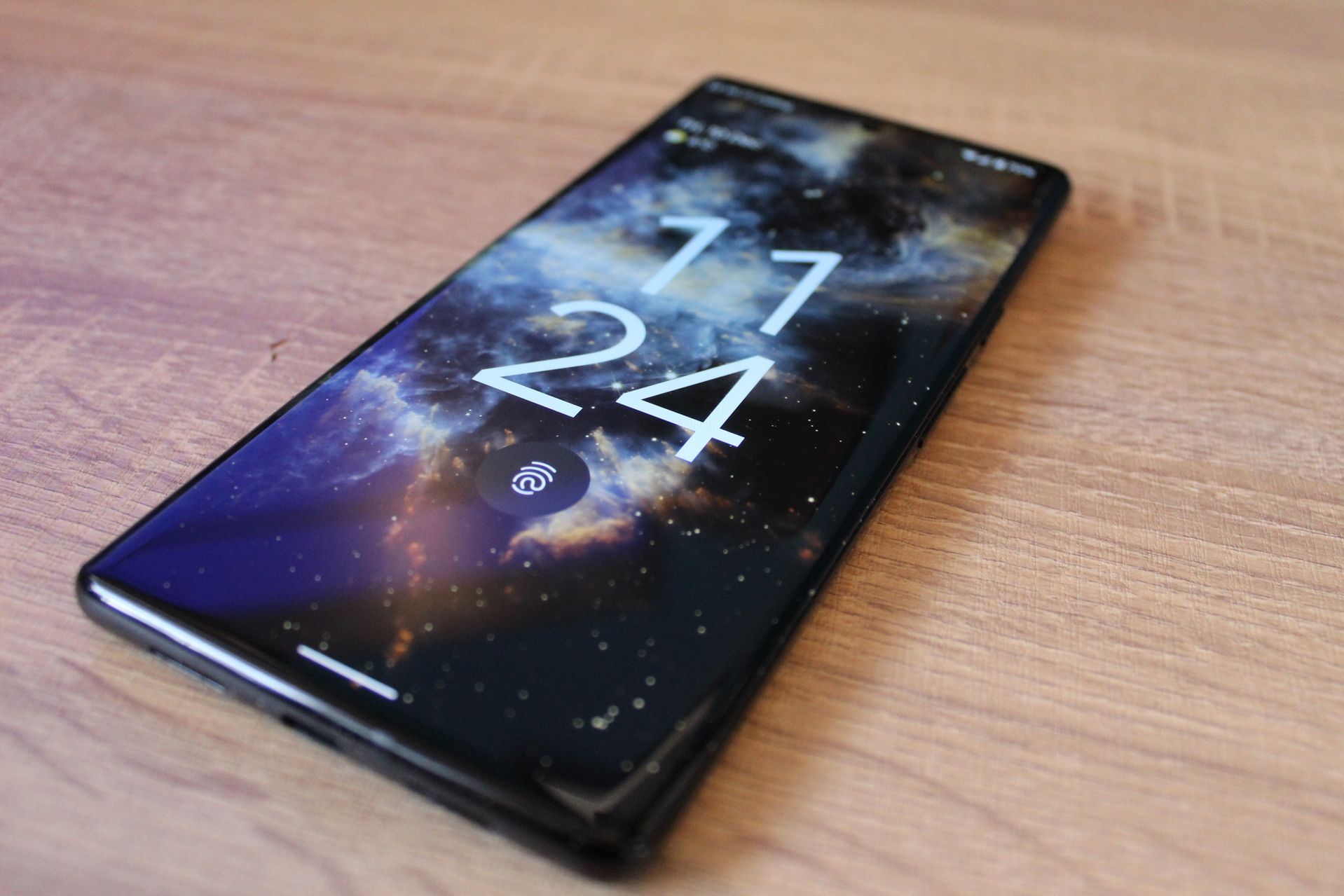
Pixel 6 fingerprint sensor: Explaining the problems, and how to make it faster
Faster fingerprint scanning for all
The Google Pixel 6 and Pixel 6 Pro are fantastic smartphones. They're snappy, take great photos, and have a distinctive design that makes them stand out from the rest of the Android crowd. But Google's latest flagships have had their share of bugs and the software updates got off to a rocky start.
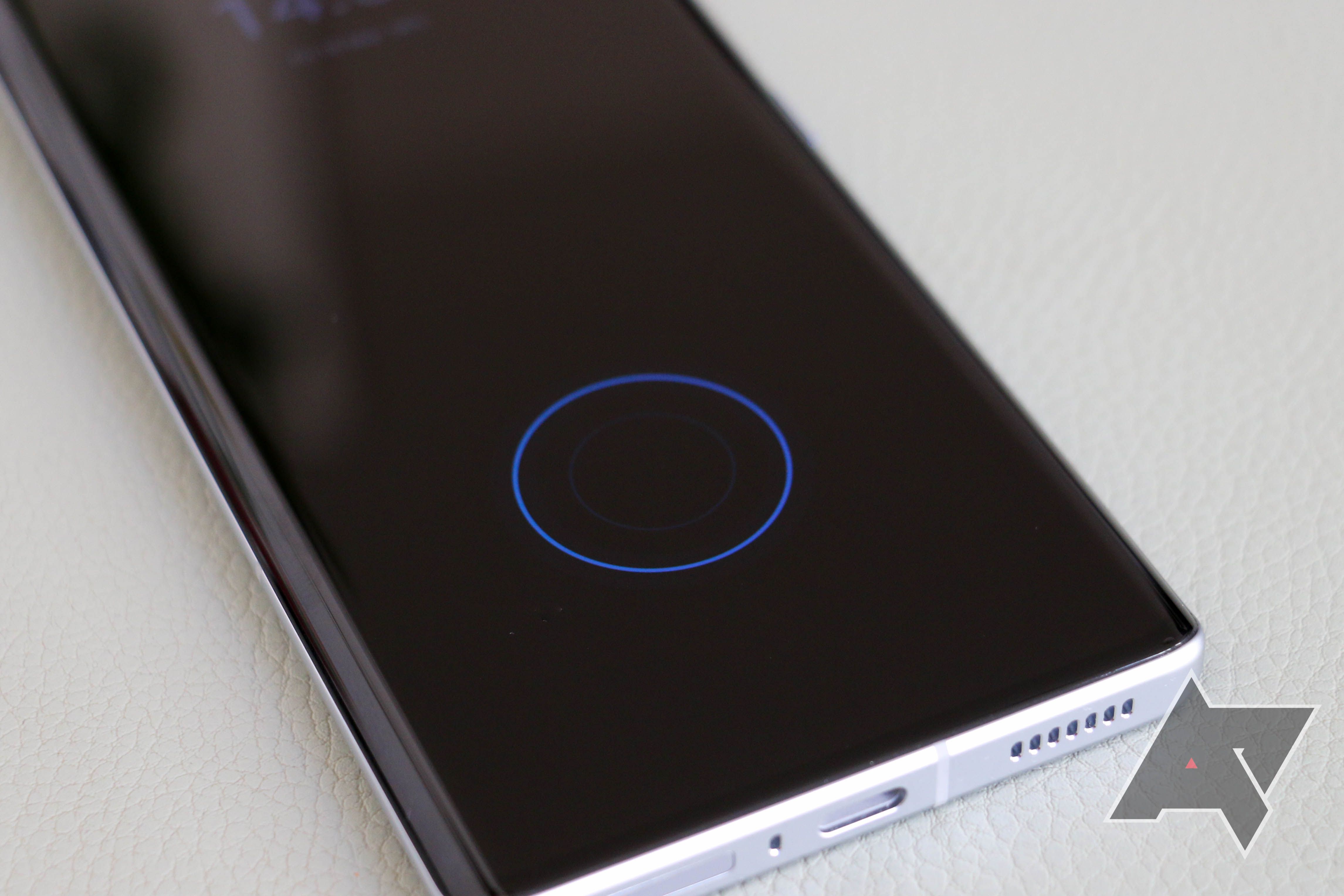
The iQOO 9 Pro has the best in-display fingerprint scanner yet and now I want it in every phone
It’s so incredibly fast
I reviewed the iQOO 9 Pro here at Android Police a while back, but there is one thing I just can’t get over, even a few weeks later. Its ultrasonic in-display fingerprint scanner is incredibly fast. That’s because the iQOO 9 Pro one of the first internationally available phones to launch with Qualcomm’s third-generation 3D Sonic Max sensor, and it’s quite the step up over the previous version still used in devices as recent as the Samsung Galaxy S22 Ultra.
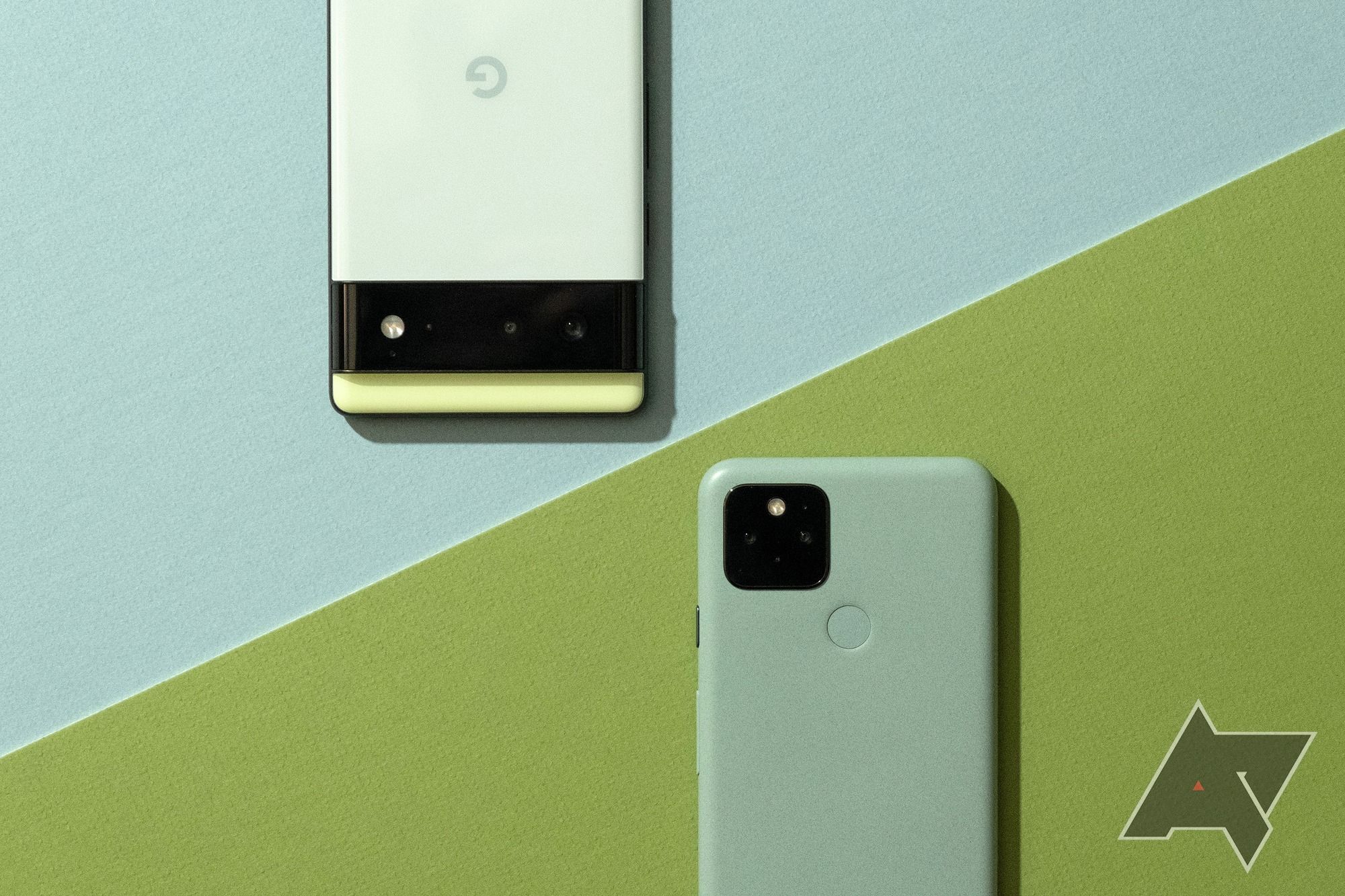
Google's supersized December update for Pixel phones includes a ton of fixes for the Pixel 6 and 6 Pro
But you'll have to wait a little while longer to install it
On the heels of a Pixel Feature Drop, Google is also bringing a long line of changes to its lineup of phones. In addition to the December 2021 security patch, this month's update includes more than 100 fixes and tweaks to devices — most notably, the Pixel 6 and 6 Pro. If you've been having problems with your latest flagship smartphone, Google might be here to save the day.
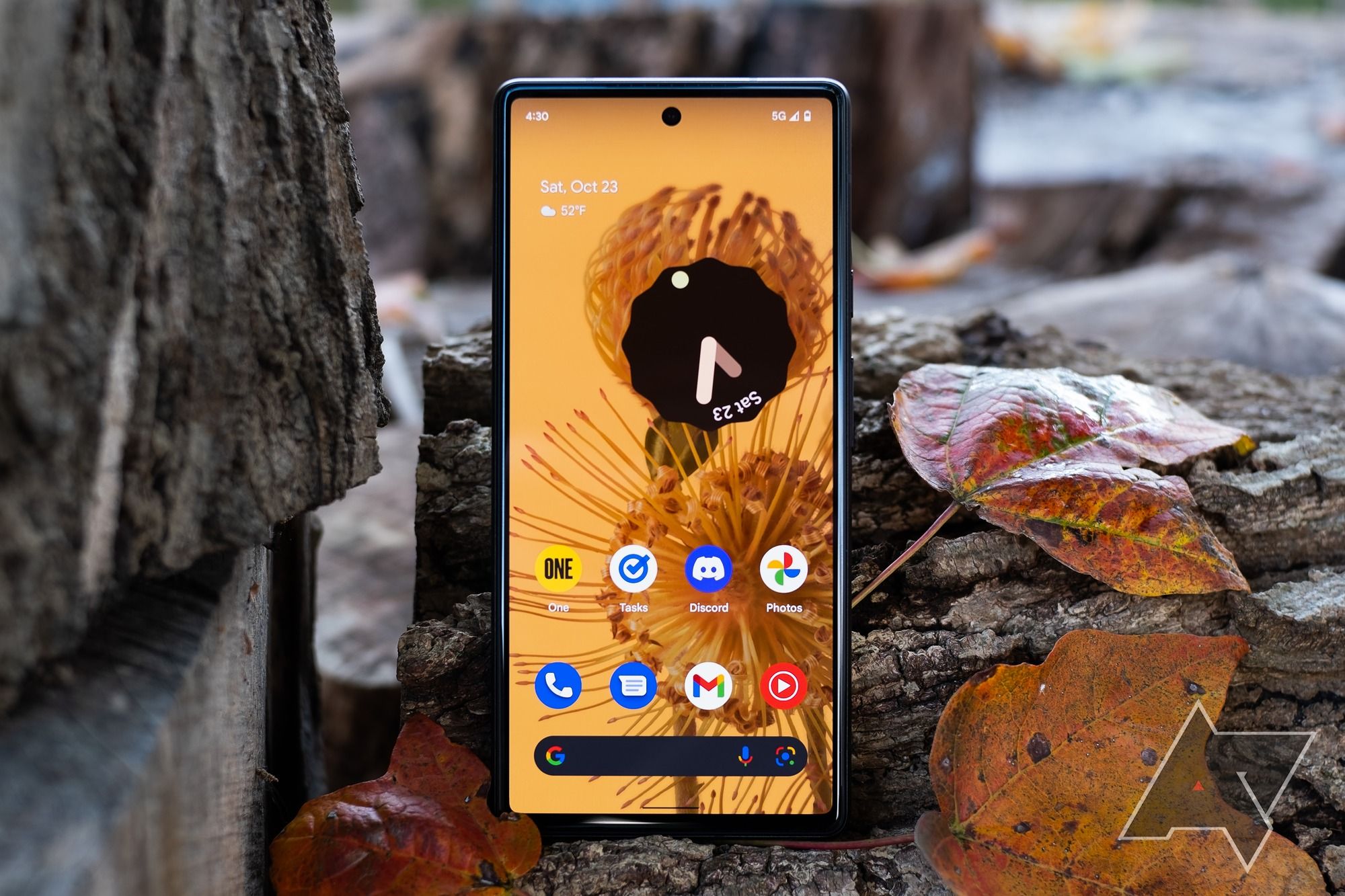
Google addresses Pixel 6 fingerprint sensor problems with surprise software update — but only for some
Some owners are getting it now, others will next month
Read update
Google's Pixel 6 had a mild update snafu earlier this month, with the Verizon models picking up the November update later than expected after Google accidentally rolled it out to more phones than it should have. On the heels of that, Google has just released a brand new pair of updates for the Pixel 6 and Pixel 6 Pro — your guess is as good as ours as to why.
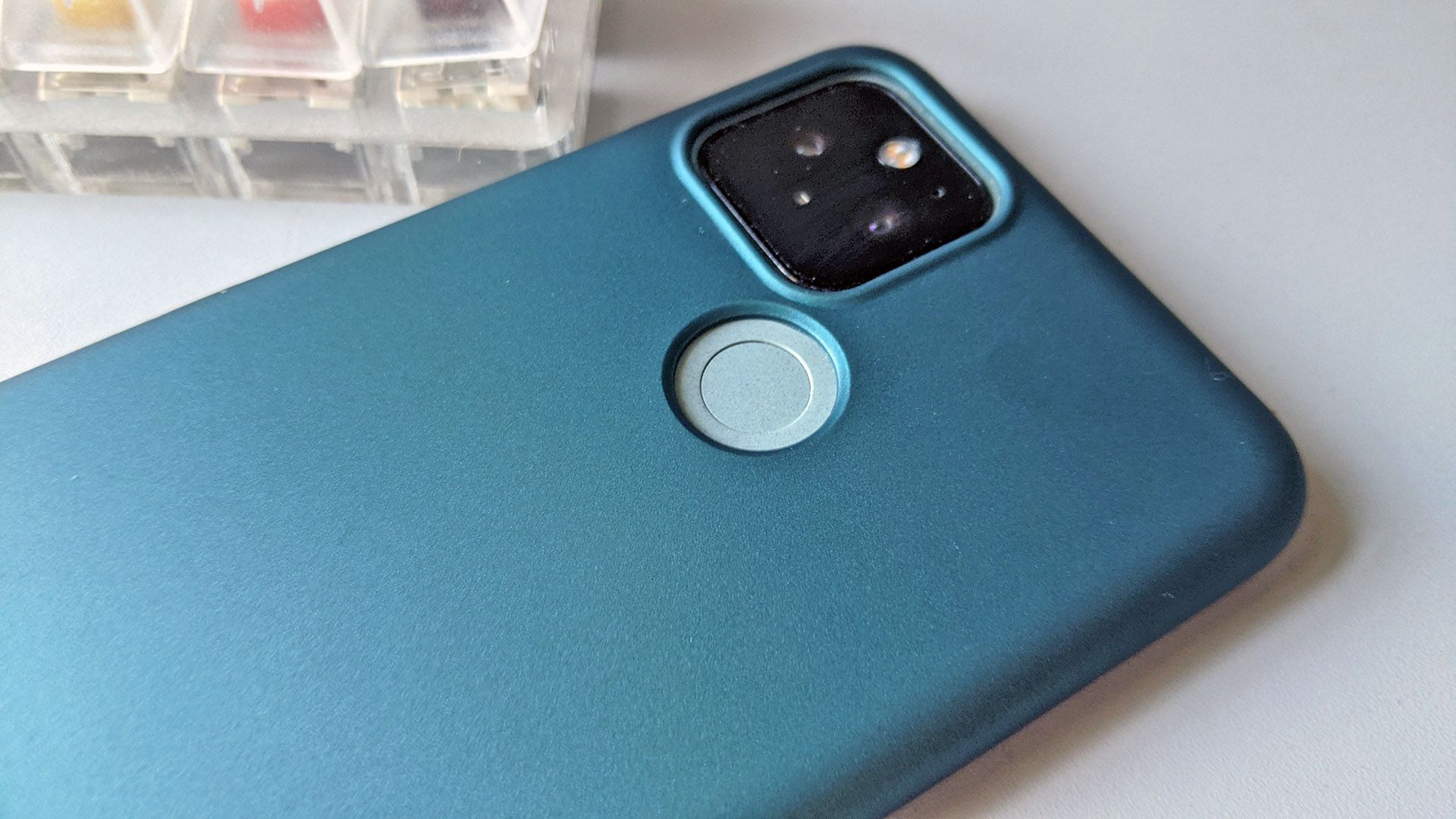
We'd heard that Google was working on a double-tap gesture for its Pixel phones as far back as January, and at least some of the infrastructure was present in March. But apparently it took this long to get the thing actually working. With Android 12 beta 2, the option to double-tap the fingerprint sensor and perform various shortcut actions is alive and kicking, and it's been renamed "Quick Tap."
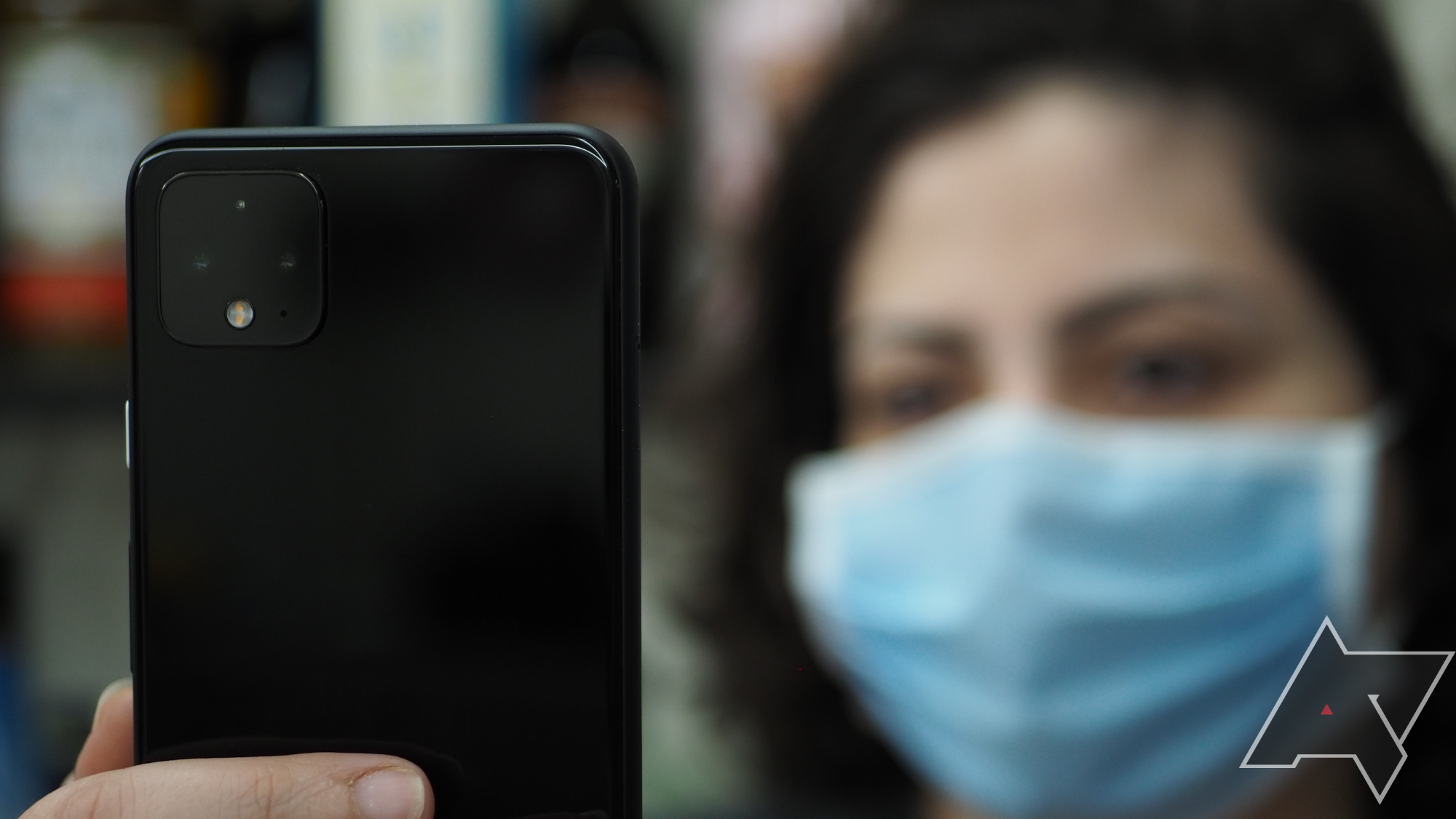
6 months with Face Unlock on the Pixel 4: Anecdotes, surprises, and disappointments
Face masks, sunglasses, app adoption, and more
Although some form of face unlocking has been available on Android for years now, the secure method that relies on IR only started popping up on devices in the last year or two. Adoption of the feature has skyrocketed in recent times, and Google finally added face authentication to the biometrics API in Android 10. Since most flagships are now launching with no fingerprint scanner and just face unlock as a security method — to the joy and dismay of many — I decided to step back and take a look at my personal experience with the feature.
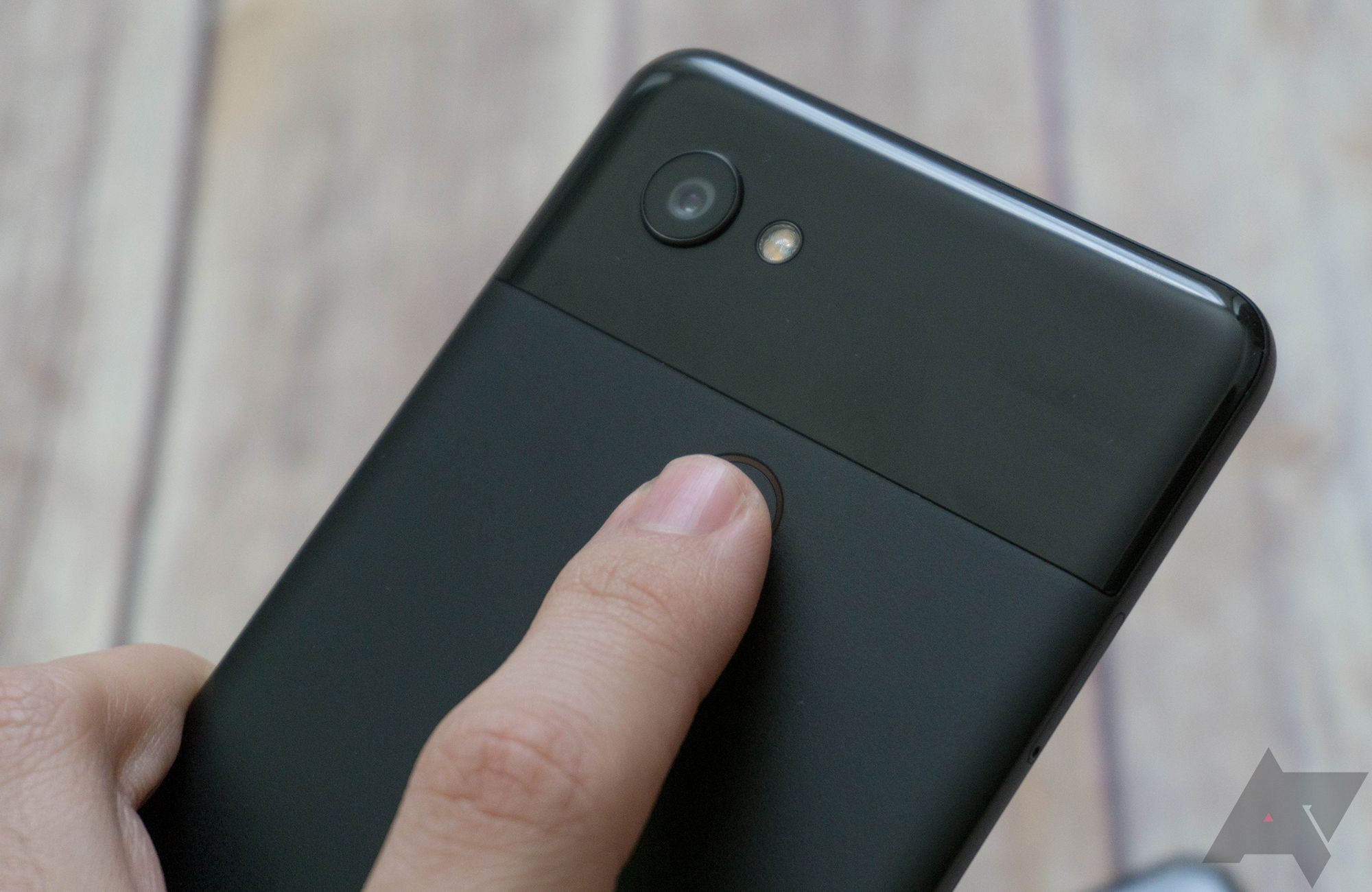
One of the small but nifty additions of Android Pie was a little trick that helped you stop your phone from going to sleep by simply touching the fingerprint sensor. The gesture stopped working in Android Q during the beta stages and isn't there in the final 10 release. It also looks like Google won't be fixing this anytime soon.
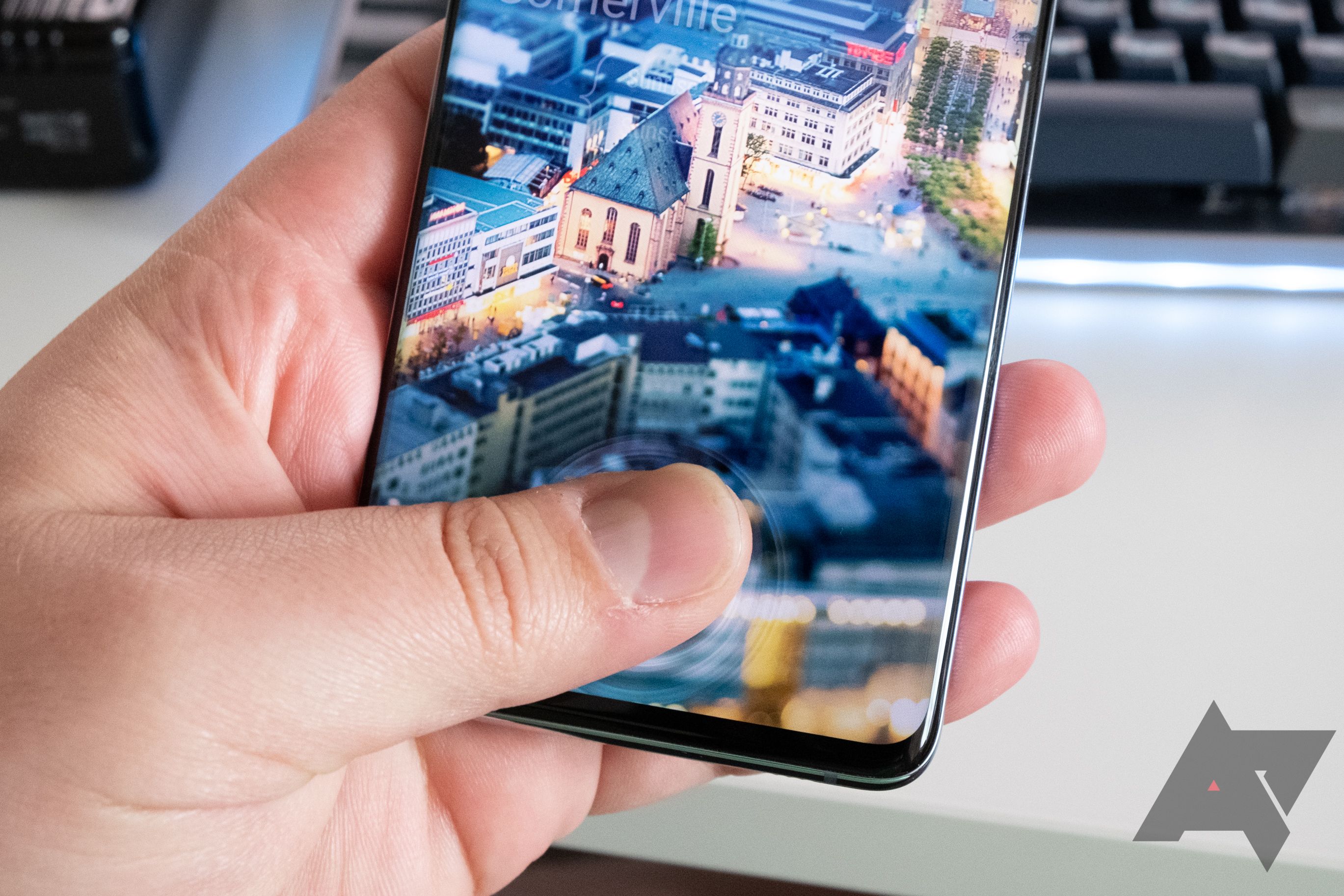
The Galaxy S10 is an excellent phone, but it's not without its faults. In fact, one of the headlining features isn't so good. Samsung's ultrasonic in-display sensor is often slow and inaccurate, and it's attempting to address that with a new firmware patch rolling out to devices. It's unclear if the sensor is actually any better, but at least Samsung is trying.
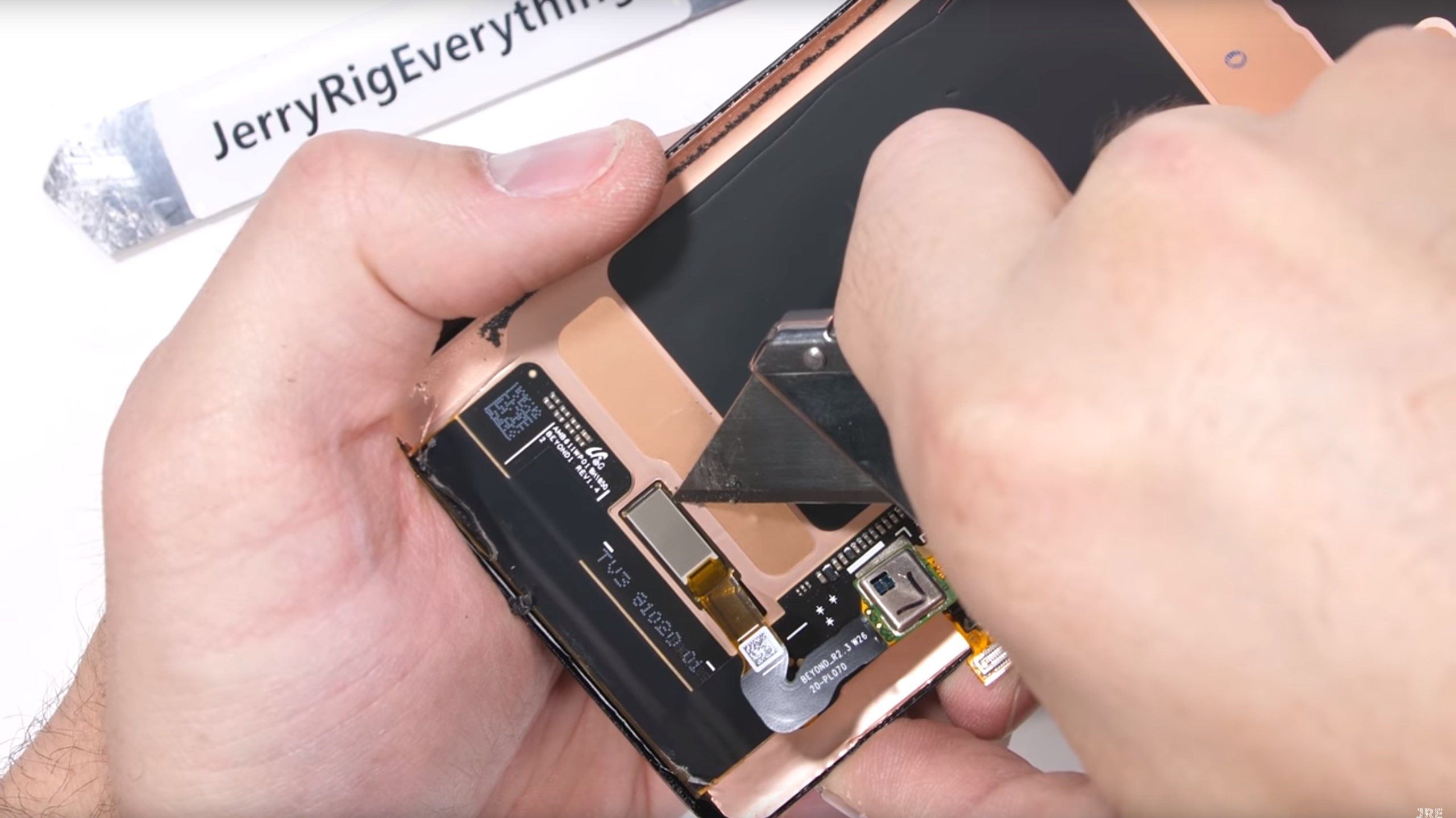
While we all wait for iFixit's eventual step-by-step, authoritative teardown of the Galaxy S10, JerryRigEverything has taken the matter into his own hands to show us the details, including that ultrasonic fingerprint sensor. We also get a glance at plenty of other hidden tech, waterproofing, and the inside of a heat pipe, though he ultimately has to wreck the phone for our collective education — a small price to pay for understanding.
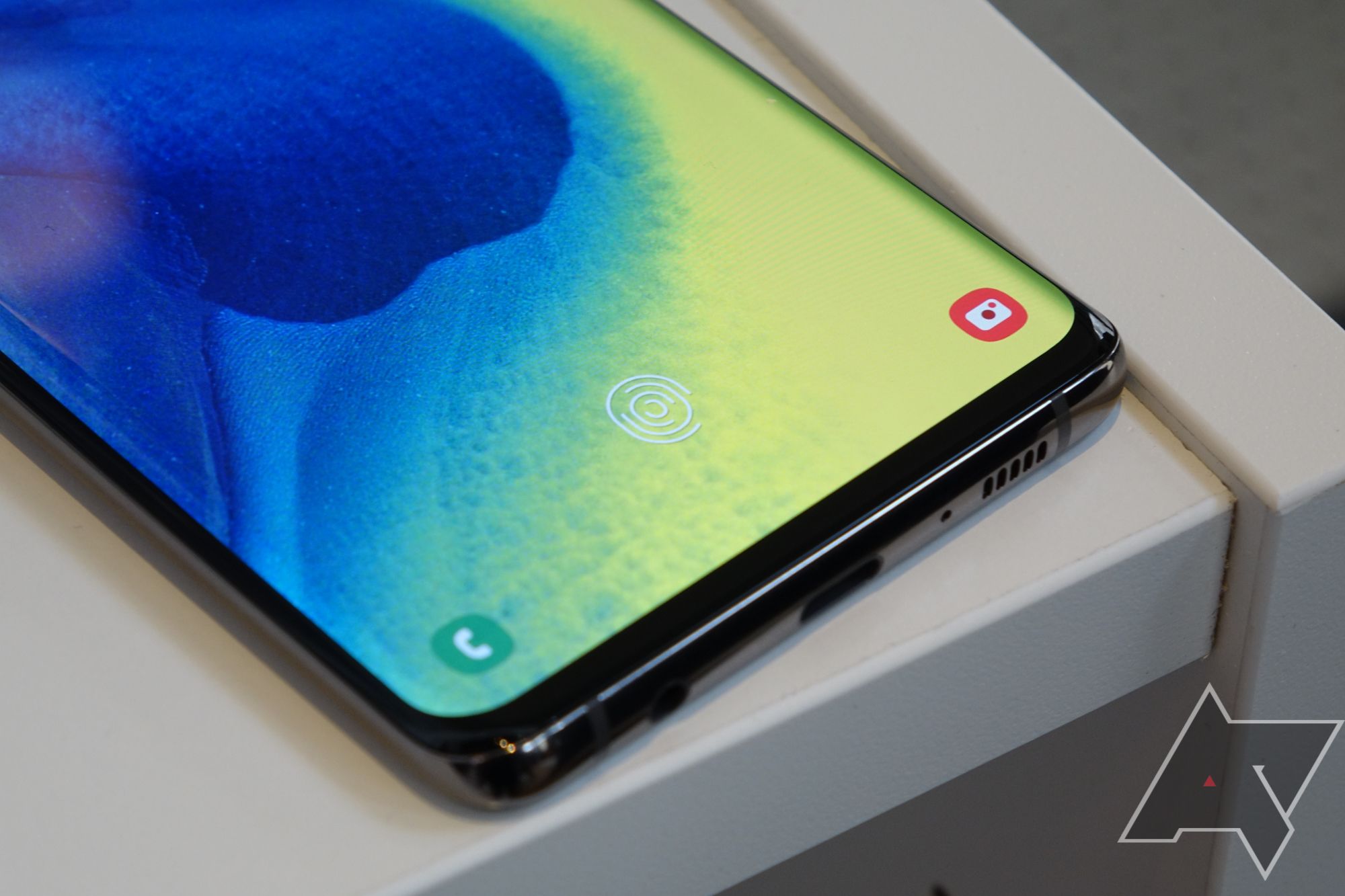
Samsung has just announced its latest super-duper flagship phone, and among the new features it boasts is the world's first commercial ultrasonic fingerprint sensor under a display. We've seen other in-display scanners on phones from the likes of OnePlus and Huawei, but they use optical technology instead. This new ultrasonic method is supposed to be better in more ways than one — let's take a look at why.
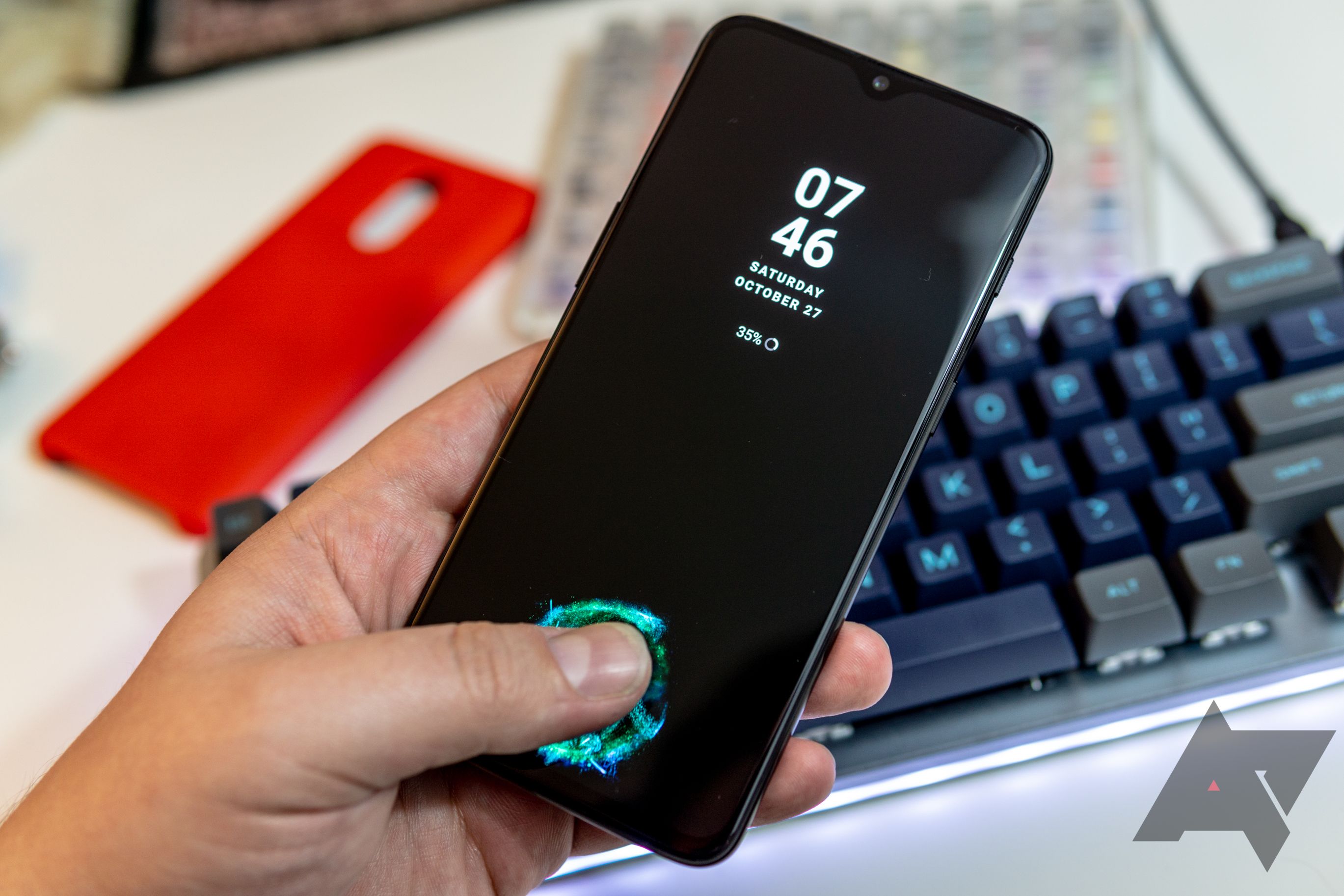
Fingerprint sensors mounted under phone screens have finally made it to market, and the OnePlus 6T is one of the first phones with the new tech. In our review, we found that the in-display sensor isn't as fast as previous OnePlus phones' fingerprint sensors have been, though it's still quick enough. However, in a recent blog post, OnePlus explains that the 6T's sensor will actually improve over time.
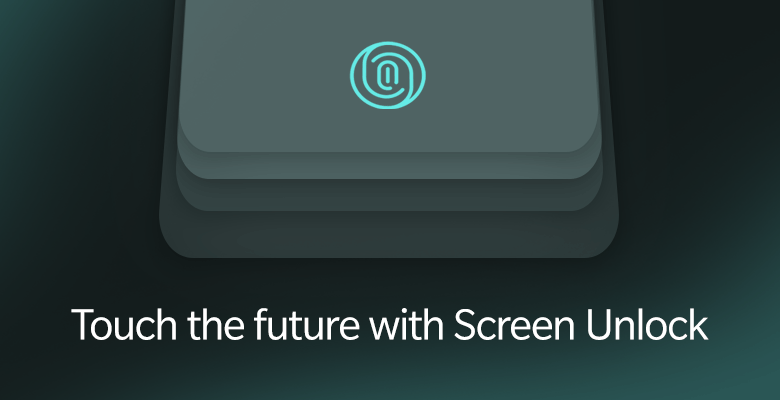
It's far from a secret at this point that the upcoming OnePlus 6T will shirk the pesky external fingerprint sensor in favor of the as-yet-unproven, superior in-display variant. Snarkiness aside, I am personally skeptical at this point, but that doesn't mean the prospect isn't neat. And from the sounds of the latest blog post from OnePlus, the company is pretty excited to show off what it has accomplished with what it dubbed Screen Unlock.
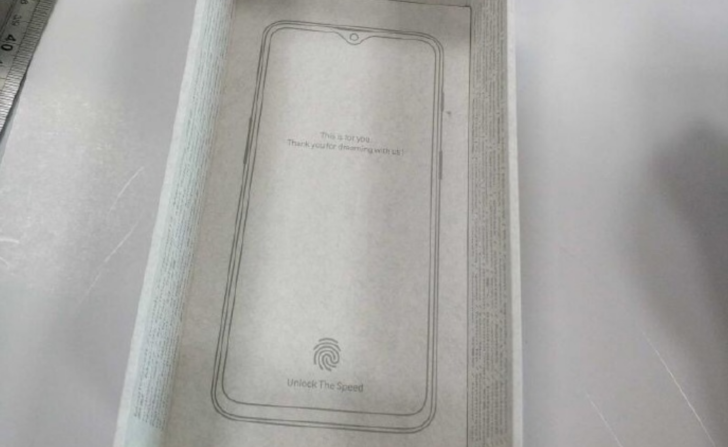
The OnePlus 6T was rumored to have an in-display fingerprint sensor ever since the Oppo R17 debuted with one. OnePlus phones are often based on one of the R-series devices and as the timing lined up with our expectations for the 6T, we collectively figured it would get one as well. Last week's alleged leaks of the phone's packaging seemed to corroborate that, and now Cnet has received confirmation from OnePlus (with screenshots) that the 6T will have an in-screen fingerprint reader.
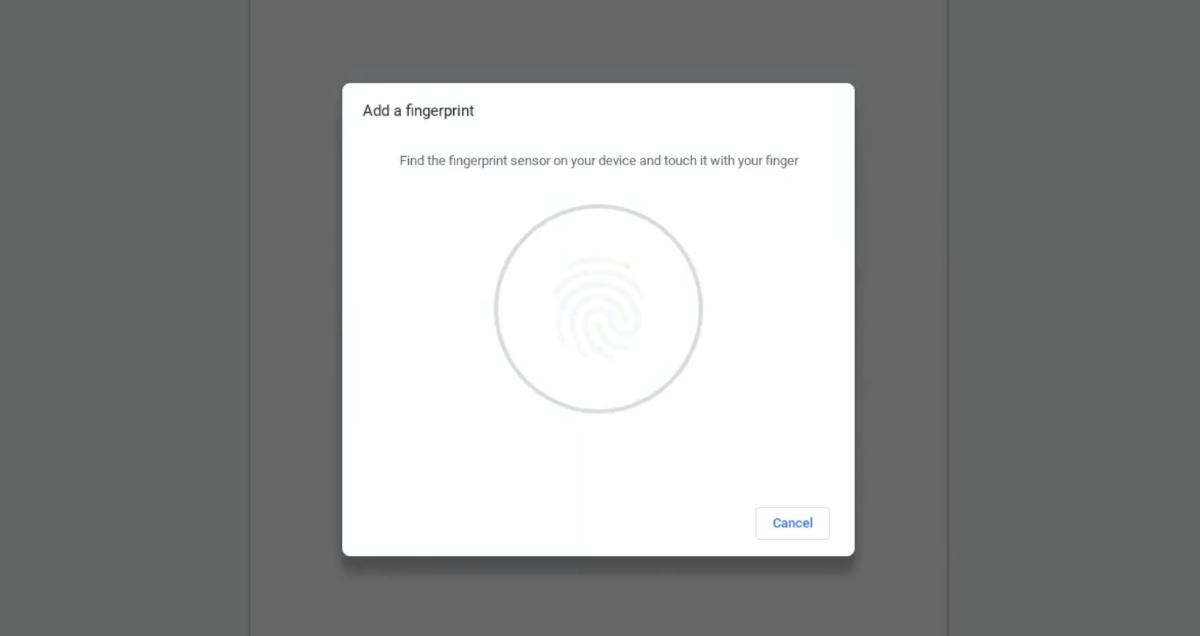
Biometric authentication is nothing new for laptops. However, no Chromebook, even Google's flagship Pixelbook, has ever had a fingerprint sensor or facial recognition. Sure, you could use your phone's fingerprint sensor via Smart Lock, but that's just not the same. A commit for face unlock was discovered on Chromium Gerrit just a few days ago, and now, one for fingerprint sensors has been spotted as well.
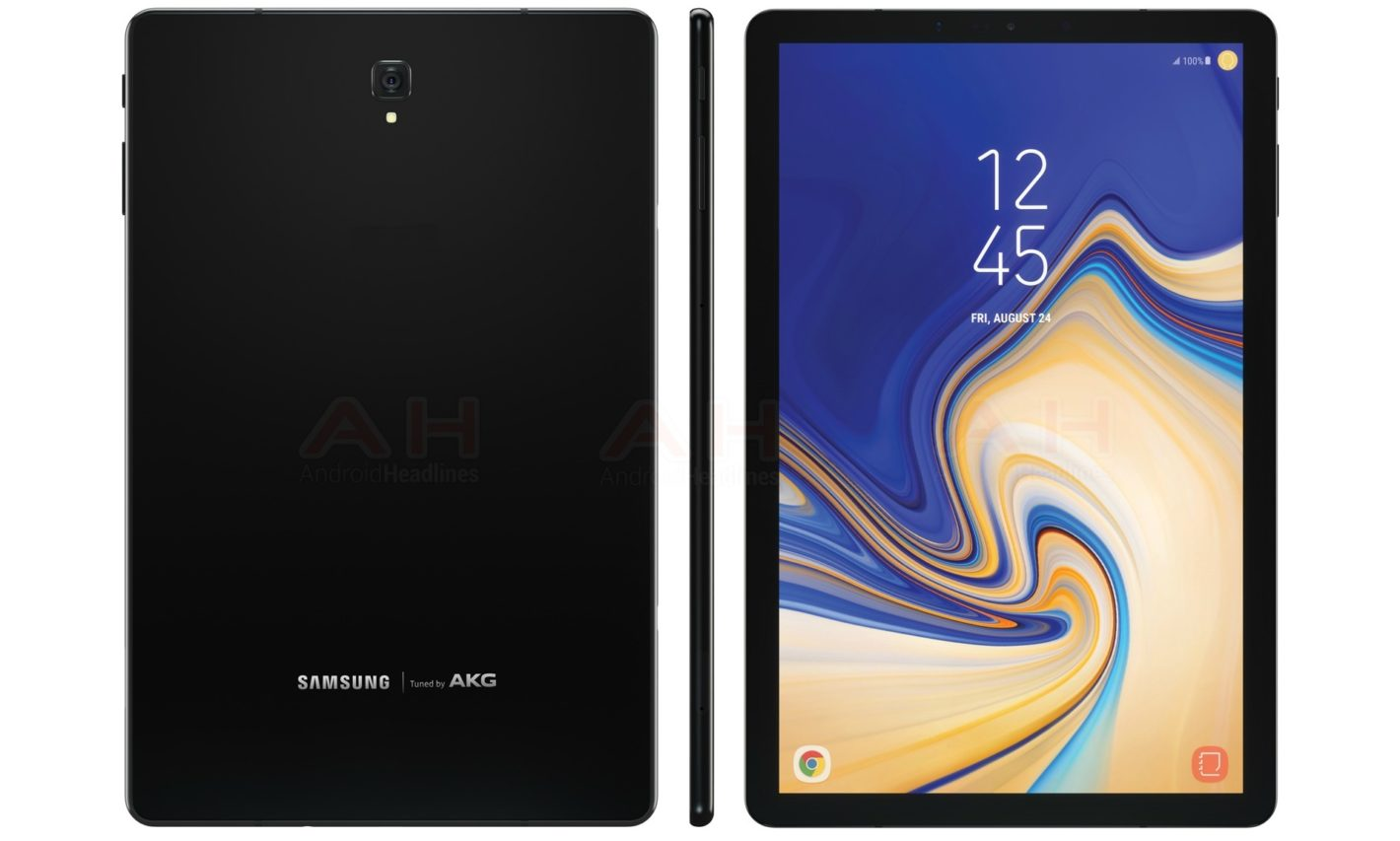
Despite the advent of jumbo-sized smartphones, and a slow but steady drop in global tablet sales reported over the last few years, Samsung is seemingly keeping the faith in the Galaxy Tab family. It’s no longer a secret that there are at least two new models in the works, both of which are expected to trim their bezels down and leave out the physical home button.

You're reading a gripping article or story on your phone and suddenly, the display goes a little dim. You know the 30 seconds or 1 minute display timeout you've set is great for regular use, but for reading stacked pieces of text, it's not nearly enough to get through one screen. So you touch the display a little, maybe swipe up and down, just to keep it from sleeping and you continue reading. With Android P, you can do something else: touch the fingerprint scanner.












